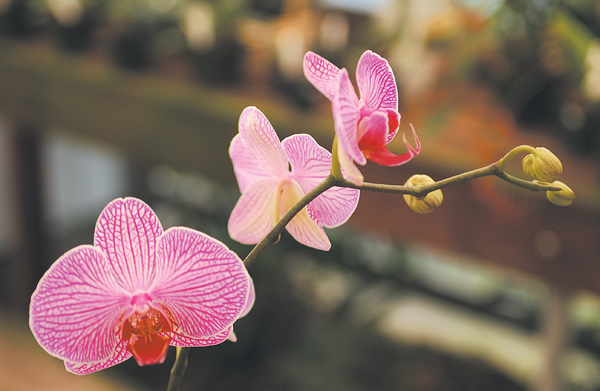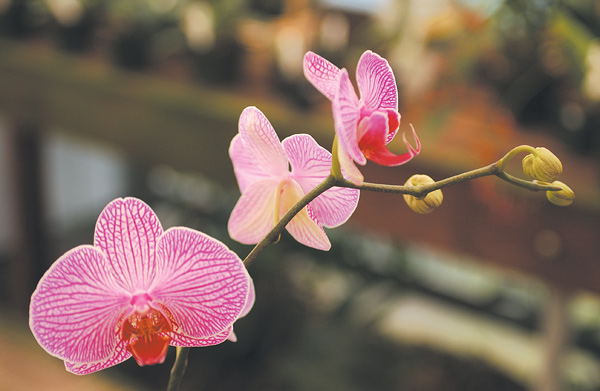Try this cure for the winter blahs New house PLANTS


Orchid
By Hugh G. EARNHART
OSU Ext. Master Gardener Volunteer
More of us than ever before are turning to indoor gardening during the winter months. Modern architecture has allowed us to practice container gardening by designing homes and offices that let in as much light as possible through skylights and walls of glass. As a result, many homes can be rich in foliage and flowers, using them as ornamentals and even as room dividers.
There is hardly an entrance that doesn’t appear more elegant with a plant on either side of the vestibule. Why not fill your fireplace with a group of ferns or palms, installing artificial lighting to make certain they flourish? Bookcases are greatly enhanced by greenery as are useless corners too small for chairs or tables.
The possibilities are endless for home or office. Plants give warmth and elegance to a room and many will grow in a happy indoor environment. Plants will also improve air quality, decrease stress and enhance productivity.
The Environmental Protection Agency has said that our homes are polluted because of the toxic fumes we produce by cooking and cleaning. NASA researchers have discovered that house plants effectively reduce home levels of pollutants.
Now that winter fatigue has set in, I encourage you go buy some house plants. Our frost-free date is not until May 15, so there’s plenty of time for them to grace your indoor living spaces, then you can move them to the patio for summer enjoyment.
There are two basic categories of indoor plants: Foliage and flowering.
Here are some foliage plants that flourish in a well-balanced house environment:
Aspidistra (cast iron plant): Indirect light.
Avocado: Direct sunlight, but away from dry heat.
Cacti/succulents: Take your choice, filtered to full sunlight.
Coleus: Filtered sunlight, warm room.
Dracaena (corn plant): Indirect sunlight.
Ferns (endless selection): filtered sunlight.
Ficus (rubber tree): Room temperature, filtered sunlight.
Ivies/vines (many to select): Partial sunlight.
Norfolk pine: Likes cooler part of the house, filtered sunlight.
Palms: Needs warm spot, indirect light.
Spider plant: Partial sunlight, easy grower.
Here are some flowering plants:
African violet: Indirect sunlight, artificial light, needs humidity.
Azalea: Partial light, needs maintenance, repotting, trim roots and top.
Begonia: Filtered light, pinch off new growth to save lower leaves, easy to propagate.
Camellia: Keep cool, filtered light.
Cyclamen: Partial sunlight, keep cool, likes 46 to 60 degrees.
Orchids: Indirect sunlight, water when surface is dry.
Geranium: Full sunlight, cooler place in room, pinch off to encourage bushy plants.
Oleander: Full sunlight, low water requirement, can get large. Low light may reduce bloom.
I have a gardening friend who says, “You are not a gardener if you are not killing at least 25 percent of what you attempt to grow.” Give it a go.
For even more plants and growing requirements, see: go.osu.edu/houseplants.
 43
43
